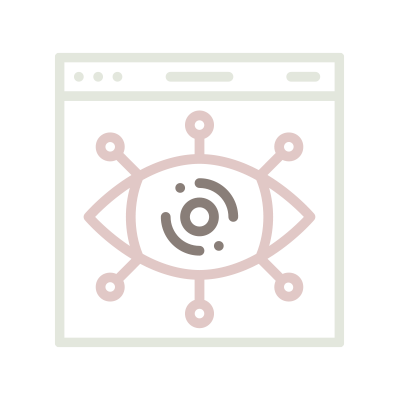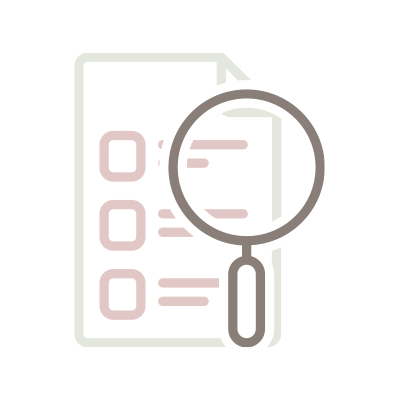Knowing your audience is essential to creating an effective marketing strategy. Genuine understanding is the foundation for strong relationships, and establishing lasting emotional connections with your clients is what keeps them coming back again and again.
But knowing your audience isn’t just about demographics—it’s about familiarizing yourself with their feelings, interests, needs, and goals. In other words, it’s about getting inside their head and understanding them on a fundamental level.
Fortunately, there are practical strategies you can use to determine what your audience really wants. With that knowledge, you can not only create a more effective marketing strategy, but ensure that your products and services truly benefit your clients.


1. Look at the Data
A great place to start understanding your audience is the data that’s readily available to you: your website analytics. By using tools like Google Analytics, you can collect basic but valuable information regarding what your clients want and need, including your users’ locations and interests, your site’s most popular pages, and even how many users are on your site at any given time.
Although this information seems superficial at first glance, it can provide you with valuable insights. For instance, knowing which pages your audience visits can show you what content they’re most interested in, which gives you an idea of what they’d like to see more of. Similarly, tracking the number of visitors on your site following a new campaign launch or social post can show you whether you’re effectively reaching your audience. By following the data, you can better tailor your messaging to what you know your audience wants.

2. Monitor Key Terms
An effective way of pinpointing your audience’s interests is to monitor keywords related to your business and the products or services it offers. By keeping track of what people in your industry are talking about, you can gain a better idea of how you might better serve your audience.
One useful tool for monitoring conversation out on the web is Mention, which lets you keep tabs on what’s trending on news sites, blogs, forums, social media, and more. The information you gather helps you understand not only your audience’s interests, but also how your brand is perceived by the online community—giving you a valuable edge in knowing what matters to your clients right now.

3. Pay Attention to Your Competitors
Because there’s likely a lot of overlap between your audiences, keeping tabs on what your competitors are doing and who’s engaging with their content can give you hints about what you could be doing to please your own audience. Additionally, by comparing yourself to your competitors, you can discover new strategies to distinguish yourself as a brand.
One way of accomplishing this is by gathering data on your competitors and their audience. While you’re more limited in the type of information you can gather, tools like Followerwonk for Twitter can help you find Twitter bios based on keywords, analyze who certain accounts follow (as well as who follows them), and track follower growth on any profile. Knowing who your competitors are, what content they’re posting, and how their audience is interacting with that content can serve as an excellent point of comparison.

4. Go Where Your Audience Is
Using online tools isn’t the only way you can gain access to the mind of your audience. Good old fashioned investigative work can be just as effective—but you’ll need to head to the online spaces where your clients spend the most time.
Where your audience spends time will vary from business to business. Some of the most likely spots to check out, however, are social media sites, discussion forums, and review sites. As you visit these places, note not only who’s interacting with your content or talking about your business, but also what they’re saying—their questions, struggles, and successes. All this information will give you a clearer picture of what speaks to your audience.

5. Conduct Regular Surveys
In exploring the different ways you can determine what your audience wants, let’s not forget one of the most basic strategies you have at your disposal—asking them directly! Conducting regular surveys is a straightforward way of finding out what ideal clients are looking for, and can help you evaluate your past marketing efforts.
When conducting surveys, there are several things to keep in mind: First, you should aim to survey your ideal clients, as they’re the ones you’re looking to serve. Additionally, to make the survey most effective, you should have a clear idea of what you want to learn from each question. Finally, you’ll want to keep the survey short and simple and maybe even consider offering a giveaway to encourage more responses.
To get you started, here’s a free download of 6 questions you should ask your audience to build an effective marketing strategy. You can either use the questions as inspiration or send the fillable form directly to your clients.

Download the Brand Experience Survey
Use this fillable form to send directly to your customers to understand why they choose to buy from you and how you can speak their language to get more customers just like them.

6. Interact With Your Audience
At the end of the day, one of the most powerful strategies you can use to understand your audience is to interact with them—whatever that may look like. Taking the time to speak with your audience not only gives you the opportunity to learn more about what they want and need, but helps you to build trust, which is an essential part of creating a lasting connection.
One of the easiest ways to interact with your audience is to connect with them on social media, and there are a variety of effective ways to do this: You can respond to comments and messages, join discussions, or even host groups on platforms like Facebook or LinkedIn. To make an even stronger impact, consider talking to clients one-on-one, whether virtually or in person. Interacting face-to-face is the most effective way to build rapport and get your questions answered.

Know Your Audience Inside and Out
To guide your brand’s marketing strategy, it’s not enough to identify your audience—you have to get in their heads and understand both what they want and how your brand can best give it to them. By monitoring data and key terms, keeping tabs on your competitors, and finding ways to connect directly with your audience, you’ll be able to better tailor your marketing efforts to what they truly want. In doing so, you’ll foster an emotional connection that keeps them coming back.
Don’t want to miss out on our articles and insights?
Sign up for the Miss Details newsletter today.



